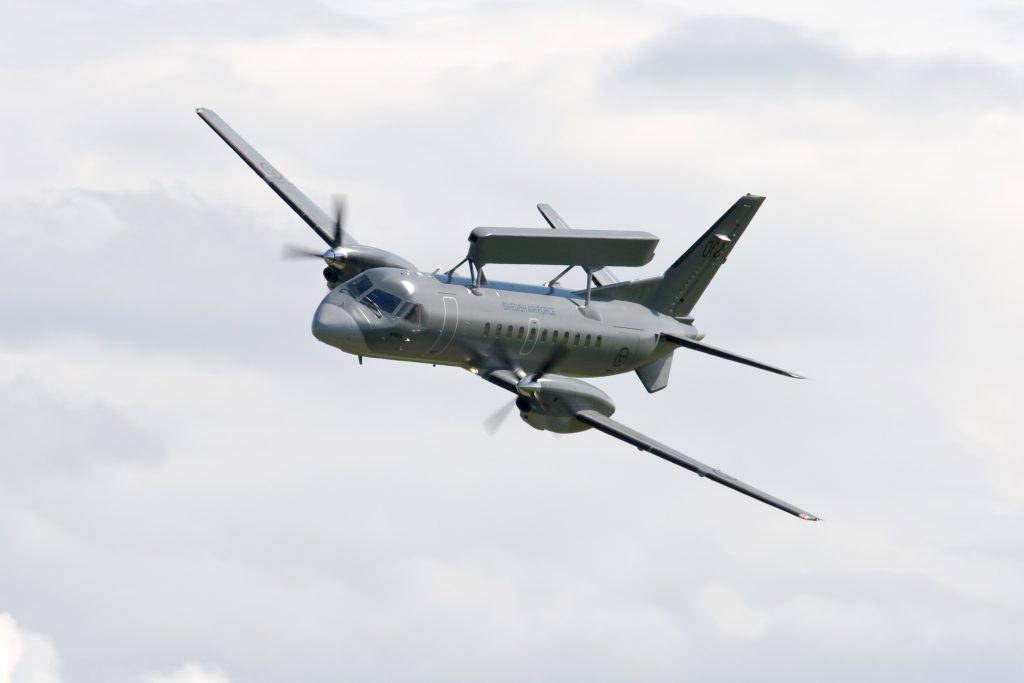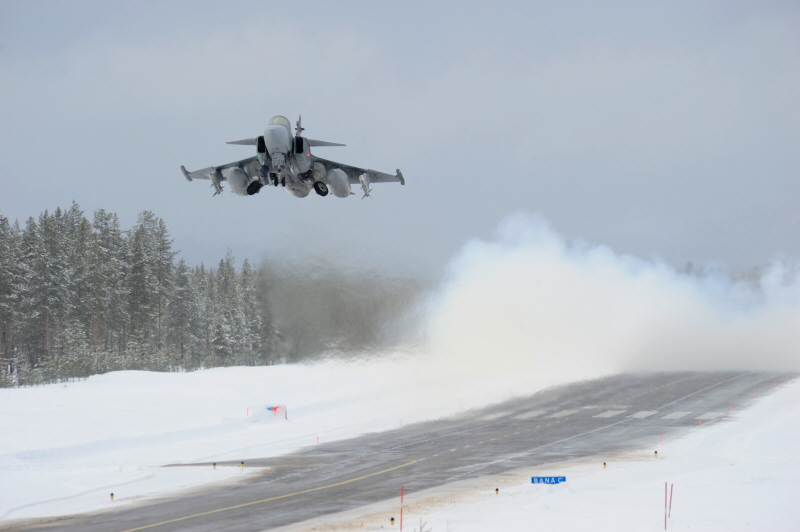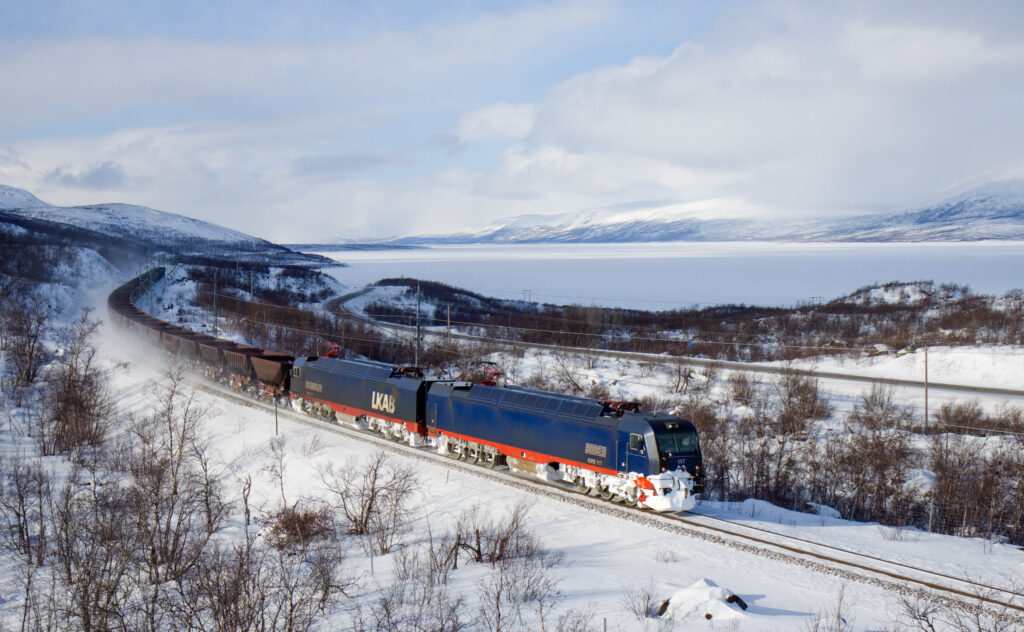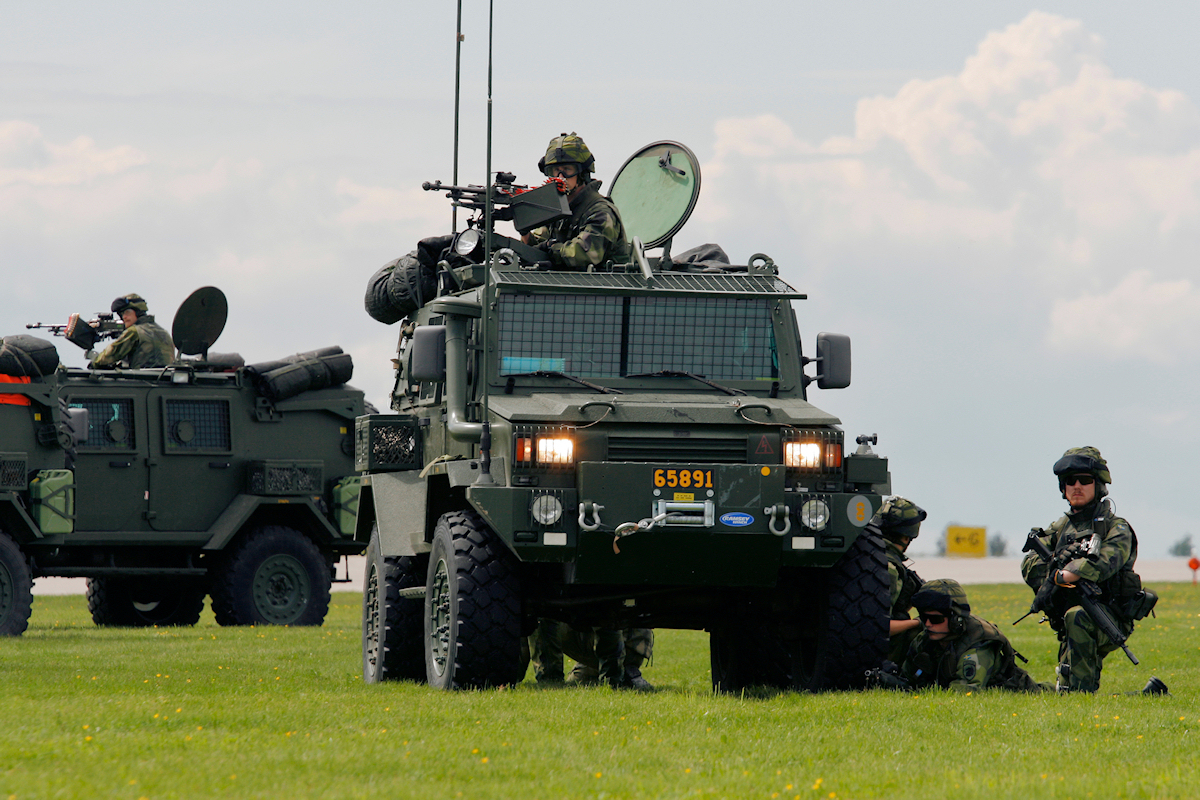As the last Scandinavian country, Sweden joined the military alliance of NATO last night. Although Sweden was not really impartial during the Cold War and was already part of the military cooperation of the European Union, NATO membership ends its officially promoted neutrality during the past 200 years for real. So, what is really changing for Sweden right away after joining NATO?
Featured photo: Simulated attack by Swedish ground forces, Linköping Air Base. (Photo: Marcel Burger)
1. Up to 32,000 Swedish personnel to be ready for NATO military operations
Minutes after the Swedish Prime Minister Ulf Kristersson delivered the documents signed on behalf of Sweden to the US Secretary Antony Blinken in Washington on 7 March 2024, the 24,000-people strong active armed forces of Sweden, plus its 32,900 reserves should be ready for military operations for NATO.
2. NATO’s decryption keys and access to NATO’s IT and intelligence systems
The Swedish military will get direct access to NATO’s more secret and detailed information about the military and strategic situation in the operations area of the alliance. Meaning: better intel of what happens where. Decryption keys (codes in practice) will be given to the Swedish armed forces to get access to NATO’s IT systems.
3. First up: “espionage” planes
The first military assets operating for NATO will likely be the two Gulfstream S 102B Gulfstream signal intelligence gathering planes of the Swedish Air Force, as well as the pair of SAAB S100 D/ASC890 airborne early warning and control aircraft. These have already been operating over the Baltic Sea, the Baltic States and Finland since the full-scale Russian invasion of Ukraine on 24 February 2022. It is safe to assume that gathered intelligence has already been shared extensively with NATO partners. They operate out of Malmen Air Base in Linköping.

4. Up to 250 Swedish military staff to NATO’s air, naval and ground commands
Swedish military officers will be fully deployed with NATO’s AIRCOM in Ramstein, Germany, which handles the air operations for NATO. The same for the naval operations led by NATO’s MARCOM near London (Northwood). For the ground operations Swedish officers will be dispatched to NATO’s LANDCOM in Izmir, Turkey. But military analysts in Sweden believe it might take up to 5 years before all 250 allocated seats for Swedish military officers can be filled.
5. Up to eight, later more of 88 JAS 39 Gripen fighter jets
Next out will initially be four to eight of the around 88 operational SAAB JAS 39 Gripen C/D fighter jets of the Swedish Air Force. They fly combat air patrols almost every day over Sweden and the Baltic Sea, and are part of the first response in case of tension or conflict. They operate out of Luleå/Kallax Air Base near the Polar Circle, out of Såtenäs Air Base in the heart of the country and out of Ronneby Air Base in the Southeast. The latter is destined to deploy its jets to Estonia, Latvia or Lithuania in case of conflict. From 2025, Uppsala Air Base 80 kilometres (50 miles) north of Stockholm will be back as an operational fighter base. The airport of Visby on the strategic island of Gotland regularly supports forward deployed Gripen aircraft;

6. One or two Lockheed C-130 Hercules transport aircraft
One or two out of six Lockheed C-130 Hercules tactical transport aircraft in Swedish service are likely next to be put into action for NATO, and/or one of its four submarines, and two of its five Visby-class stealth corvettes;
7. Up to 400 ground troops within 24 hours
Up to 400 ground troops are likely to be able to deploy within 24 hours to other NATO countries. Later more will follow.
8. Hundreds of millions into upgrading road and rail infrastructure
Hundreds of millions up to billions of euros in new investments are expected for the Swedish road and rail infrastructure, to accommodate faster and more efficient transport of large groups of military vehicles and troops through the country. A bottleneck is the strategic iron ore railway line between Luleå on the Gulf of Bothnia in the east of the country, and the ice-free harbour of Narvik in Norway. Read more in the story Derailment of key iron ore train Sweden investigated as sabotage, at Nordicreporter.com).

9. Preparing the general public
The Myndigheten för samhällsskydd och beredskap (MSB), the Swedish Civil Contingencies Authority, will likely launch an information campaign about Sweden in NATO soon to the general public of the country. It had already sent out a booklet with the most important information on how to act during crisis and what to prepare years ago, but Swedish experts believe many Swedes lack knowledge of NATO. Key civilians in the Swedish society have been already been appointed their wartime role for a few years now, a policy that was refreshed after decades of negligence. Read more about it in the story For if Sweden is attacked: fast increase of civilian “war appointees”, at Nordicreporter.com.

10. Taking a stand on nuclear weapons
Policy makers will have to take a stand on more dodgy issues such as will Sweden allow nuclear weapons on its territory. Sweden is a nuclear nation, with 6 operational nuclear plants, and did produce weapons grade plutonium for its own nuclear weapons program during the 1960s and 1970s. A few decades ago the ingredients for nuclear weapons were secretly flown and turned over to the United States.
| © 2024 Marcel Burger, nordicreporter.com
